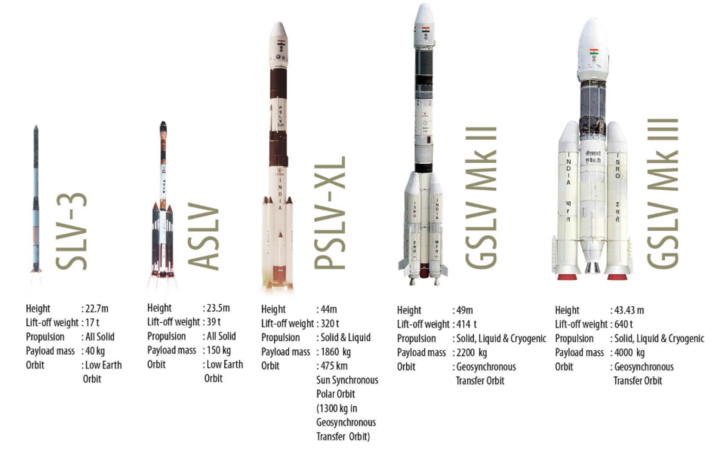- Home/
- CDS & Defence/
- Article
What is PSLV and GSLV? – Know Difference and Important Details
By BYJU'S Exam Prep
Updated on: September 25th, 2023

In this article, we are discussing PSLV & GSLV in detailed introduction, differences, and criteria which is asked in many govt exams like CDS, AFCAT and other Defence Exams.
The Indian Satellite Launch Vehicle is designed and operated by Indian Space Research Organisation (ISRO). The launch vehicles by India are basically classified into 2 types:
- Polar Satellite Launch Vehicle
- Geosynchronous Satellite Launch Vehicle
Polar Satellite Launch Vehicle (PSLV):
PSLV is primarily designed to deliver earth-observation or remote-sensing satellites with a lift-off mass of up to approximately 1750 kg to 600-900 km altitude Sun-Synchronous circular polar orbits.
The satellites of remote sensing orbit the earth from pole to pole (at an orbital-plane inclination of about 98 degree). An orbit is called sun-synchronous orbit when the angle is constant throughout the orbit between the line that joins the centre of the Earth and the satellite.
Remote sensing satellites orbit the earth from one pole to another pole (at an inclination of about 98 degrees orbital-plane). An orbit is called sun-synchronous orbit when the angle is constant throughout the orbit between the line that joins the centre of the Earth and the satellite.
In addition to launching the remote sensing satellites to Sun-synchronous polar orbits, the PSLV is also used to launch the elliptical Geosynchronous Transfer Orbit (GTO) with lower lift-off mass satellites up to about 1400 kg.
PSLV is a four-stage launch vehicle that uses solid rocket engines in the first and third stages and liquid rocket engines in the second and fourth stages. It also uses strap-on motors to increase the thrust provided by the first stage, and depending on the number of these strap-on boosters, the PSLV is classified as core-alone (PSLV-CA), PSLV-G or PSLV-XL variants in its various versions.
Geosynchronous Satellite Launch Vehicle (GSLV):
The GSLV is primarily designed to deliver highly elliptical (typically 250x 36000 km) Geosynchronous Transfer Orbit (GTO) communication satellites. The satellite in GTO is further elevated to its final destination, namely, Geosynchronous Earth orbit (GEO) at an altitude of about 36000 km (and zero deg inclination on the equatorial plane) by firing its onboard engines.
Because of their geosynchronous nature, the satellites in these orbits appear to be permanently fixed in the same position in the sky as seen from a specific location on Earth, thereby avoiding the need for a tracking ground antenna and are therefore useful for communication applications.
ISRO is developing two versions of the GSLV. The first version, GSLV Mk-II, is capable of launching lift-off weight satellites up to 2,500 kg to the GTO and lift-off weight satellites up to 5,000 kg to the LEO. GSLV MK-II is a three-stage vehicle with a solid rocket engine in the first stage, Liquid Fuel in the second stage and Cryogenic Upper Stage in the third stage.

Here is the Tabular representation of the same:
|
Criteria |
PSLV |
GSLV |
|
Delivers/Launches |
|
|
|
Orbit |
|
|
|
Stages |
4 stages :
|
3 stages :
|
|
Recent developments |
Launched many successful missions like Mars Orbiter Mission (MOM), IRNSS. |
GSLV-Mk II (indigenous cryogenic upper stage) |
You can attempt the CDS & Defence Test Series to boost up your preparation and will help you to plan the best strategies for the CDS 1 2022 Exam. You can also enrol in our Classroom Program which will boost up your chances to get succeed in the CDS 1 2022 Exam. You can also check 2500+ Selections in CDS & Defence – BYJU’S Exam Prep Hall of Fame and try to get into our Hall of Fame.
Important Links:
More from us:
Important Study Notes for Defence Exams
Thanks
Download the BYJU’S Exam Prep App Now
The Most Comprehensive Exam Prep App
#DreamStriveSucceed
